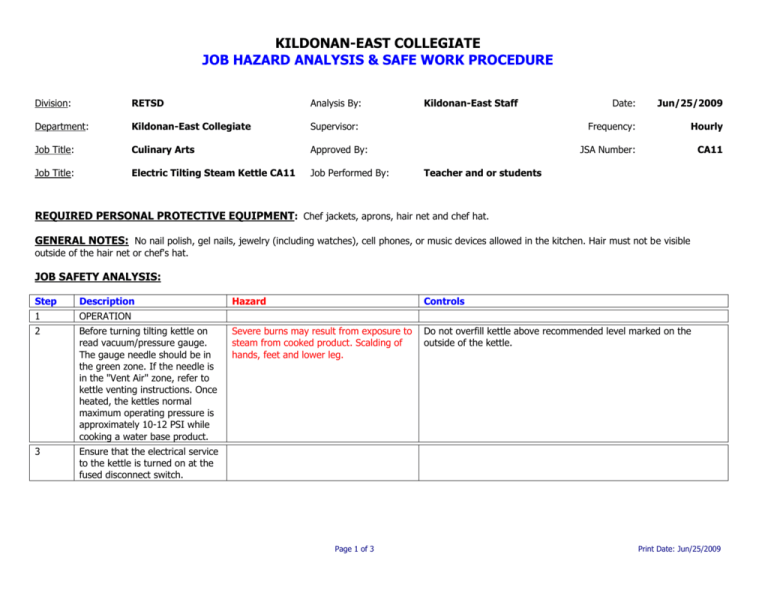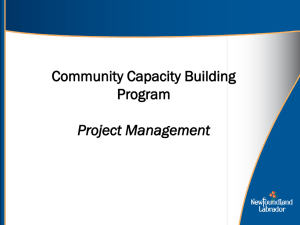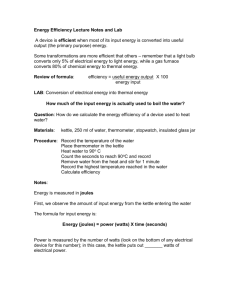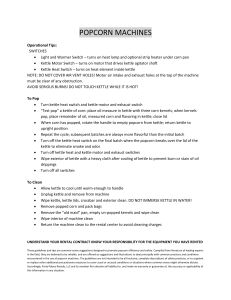Electric Tilting Steam Kettle Safe Work Procedure
advertisement

KILDONAN-EAST COLLEGIATE JOB HAZARD ANALYSIS & SAFE WORK PROCEDURE Division: RETSD Analysis By: Department: Kildonan-East Collegiate Supervisor: Job Title: Culinary Arts Approved By: Job Title: Electric Tilting Steam Kettle CA11 Job Performed By: Kildonan-East Staff Date: Jun/25/2009 Frequency: Hourly JSA Number: CA11 Teacher and or students REQUIRED PERSONAL PROTECTIVE EQUIPMENT: Chef jackets, aprons, hair net and chef hat. GENERAL NOTES: No nail polish, gel nails, jewelry (including watches), cell phones, or music devices allowed in the kitchen. Hair must not be visible outside of the hair net or chef's hat. JOB SAFETY ANALYSIS: Step Description 1 OPERATION 2 Before turning tilting kettle on read vacuum/pressure gauge. The gauge needle should be in the green zone. If the needle is in the "Vent Air" zone, refer to kettle venting instructions. Once heated, the kettles normal maximum operating pressure is approximately 10-12 PSI while cooking a water base product. 3 Ensure that the electrical service to the kettle is turned on at the fused disconnect switch. Hazard Controls Severe burns may result from exposure to steam from cooked product. Scalding of hands, feet and lower leg. Do not overfill kettle above recommended level marked on the outside of the kettle. Page 1 of 3 Print Date: Jun/25/2009 4 Preheat the kettle by turning the on/off switch temperature control to the desired temperature setting. The heat indicator light (green) will remain lit until temperature is reached. When the green light goes off the elements are off and the preheating is complete. 5 Place food products into the kettle. The heat indicator light (green) will cycle on and off indicating the elements are cycling on and off. To maintain the set temperature. Do not fill kettle above recommended level marked on the outside of the kettle. 6 When cooking is completed turn on/off switch to the "off" position. 7 Pour contents of the kettle into an appropriate container by tilting the kettle forward. Care should be taken to pour slowly enough to avoid splashing. 8 CLEANING PROCEDURE 9 An important part of kettle cleaning is to prevent food from drying on. For this reason, cleaning should be completed immediately after cooked foods are removed. The kettle must be cleaned regularly to maintain efficient, safe, reliable operation. Scalding of hands, feet And lower legs. Do not overfill kettle above recommended level marked on the outside of the kettle. Burns Each kettle is equipped with a marine lock to prevent accidental tilting. Inspect lock daily to ensure it is free moving and does not bind or stick. Use a dish towel to handle hot containers. Page 2 of 3 Print Date: Jun/25/2009 10 Place the kettle's ON/OFF switch temp. Control to the OFF position. Prepare a warm water and mild detergent solution in the kettle. Remove food soil inside the kettle using a NYLON BRUSH. Loosen food that is stuck to the kettle by allowing it to soak at a low temperature setting. 11 If the kettle is equipped with a draw-off valve it should be cleaned as well. 12 Rinse kettle interior thoroughly then drain the rinse water. Do not leave water sitting in the unit when not in use. 13 Use mild soapy water and a damp sponge or soft cloth to wash the exterior of the kettle, rinse and dry. 14 For more difficult cleaning applications one of the following can be used; Alcohol, Baking Soda, Vinegar or a solution of Ammonia and water. Leave the cover off when the kettle is not in use. Corrosive chemicals Refer to instructor and MSDS for proper handling instructions of various cleaners. Wear appropriate gloves. AUTHORIZED EMPLOYEE INFORMATION: ID NUMBER: LAST NAME: FIRST NAME: REMARKS: JOB HISTORY INFORMATION: DATE: REMARKS: Approval Signature: Date: Page 3 of 3 Print Date: Jun/25/2009





